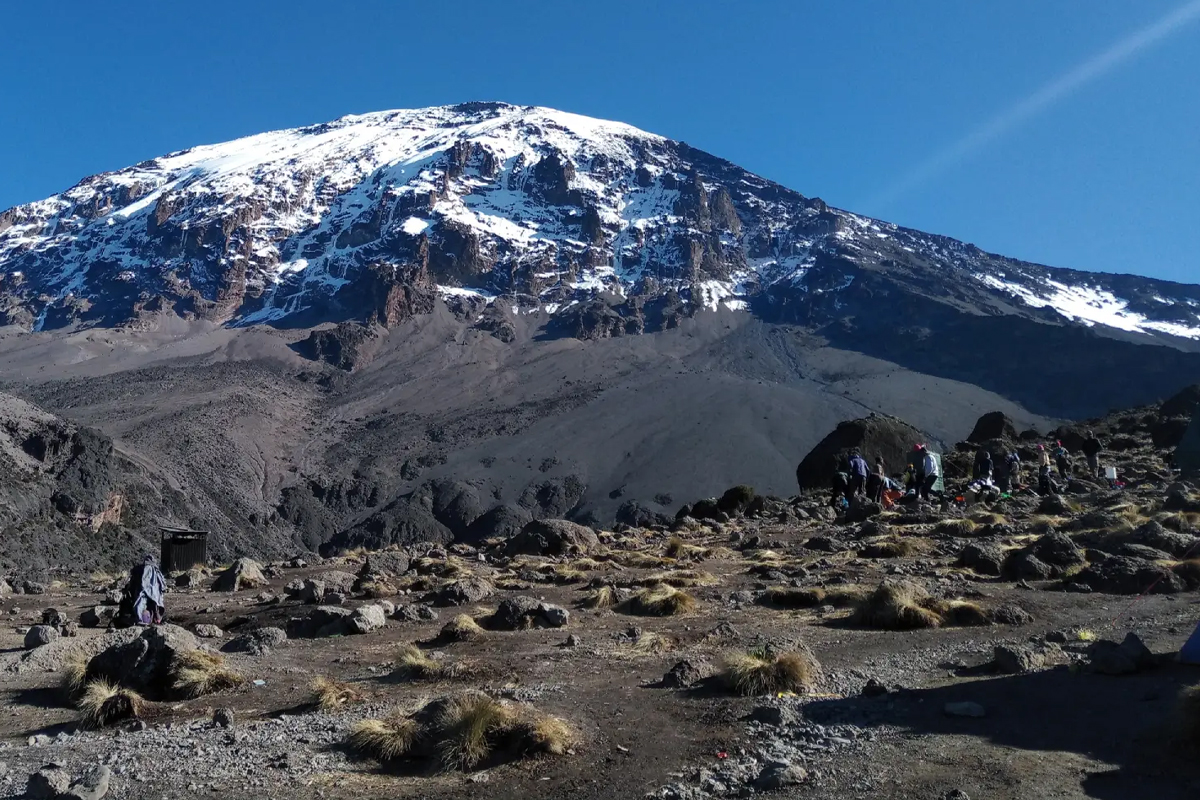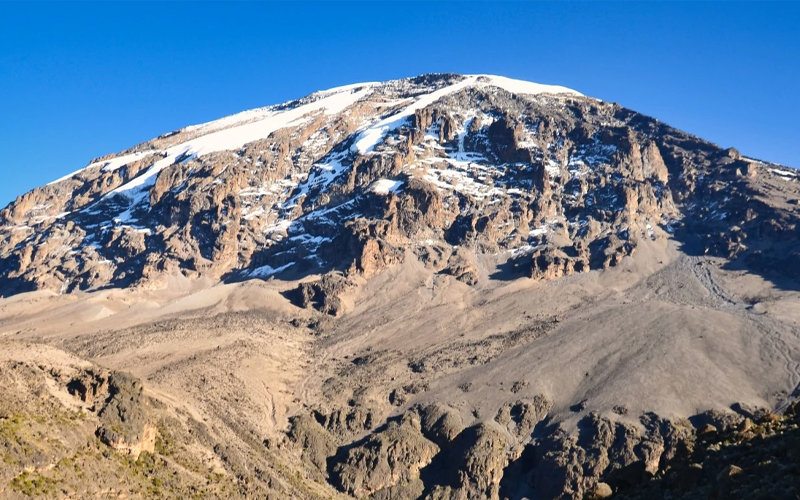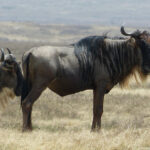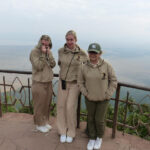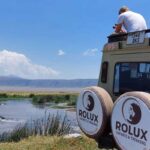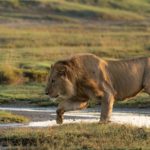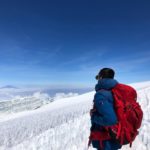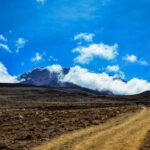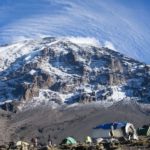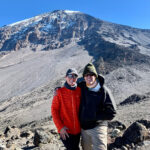Climbing Mount Kilimanjaro in 2025 Trekking Tips
Mount Kilimanjaro, Africa’s tallest mountain and one of the Seven Summits, continues to be a dream destination for adventurers worldwide. As we navigate the post-COVID era, trekking Kilimanjaro in 2025 offers a unique blend of challenge, thrill, and breathtaking beauty. However, the landscape of travel and trekking has shifted significantly. Here’s a complete guide on what every trekker should know before embarking on this once-in-a-lifetime journey.
Why Climb Kilimanjaro in 2025?
Climbing Mount Kilimanjaro has always been a bucket-list adventure, and 2025 is an excellent time to undertake this epic journey. Here’s why:
1. Post-Pandemic Revival
The tourism sector has bounced back strongly, and Kilimanjaro National Park has implemented enhanced safety protocols to ensure trekkers’ well-being. With fewer restrictions, the climbing experience is smoother and more enjoyable.
2. Advanced Trekking Infrastructure
Post-COVID investments in trekking infrastructure, such as improved trail maintenance, eco-friendly facilities, and better porter support, ensure an upgraded trekking experience in 2025.
3. Unique Climatic Patterns
Changing global climates are impacting Kilimanjaro’s weather. In 2025, experts predict clearer skies during the dry seasons, offering unparalleled views from Uhuru Peak.
Key Considerations for Post-COVID Kilimanjaro Climbs
To make the most of your trek in 2025, understanding the unique post-COVID requirements and adjustments is essential.
1. Health and Safety Protocols
While many pandemic restrictions have been eased, some precautions remain in place:
- Health Checks: You may need to show proof of recent medical clearance or vaccinations.
- Sanitization: Campsites, trekking gear, and dining areas are regularly sanitized.
- Masks and Hygiene: Masks may still be required in group transport or crowded spaces.
2. Booking Ahead
Due to a surge in interest post-COVID, many reputable tour operators are experiencing high demand. Book your trek at least 6–9 months in advance to secure your preferred route and travel dates.
3. Travel Insurance
Post-COVID travel insurance is now more important than ever. Ensure your policy covers:
- Emergency evacuation
- Trip cancellations
- COVID-related medical expenses
4. Trekking Permits
Kilimanjaro trekking permits remain mandatory. It’s crucial to work with a certified tour operator who will handle the permit process for you.
Choosing the Best Route in 2025
Kilimanjaro offers multiple routes, each with unique features. Here are the top recommendations for 2025:
1. Northern Circuit Route
- Duration: 9–10 days
- Why Choose It: Known as the most scenic and least crowded route, it offers excellent acclimatization and a high success rate.
- Perfect For: Trekkers with time to spare who want to avoid crowds.
2. Lemosho Route
- Duration: 7–8 days
- Why Choose It: Famous for its stunning landscapes and gradual ascent, perfect for acclimatization.
- Perfect For: Trekkers seeking a balanced challenge and stunning scenery.
3. Marangu Route
- Duration: 5–6 days
- Why Choose It: Known as the “Coca-Cola Route,” it’s the only route with hut accommodations.
- Perfect For: Budget-conscious trekkers or those preferring shelter over tents.
Preparing for Your Kilimanjaro Trek in 2025
1. Physical Preparation
Climbing Kilimanjaro requires endurance, strength, and mental fortitude. Here’s how to prepare:
- Cardio Training: Focus on activities like hiking, running, or cycling to build stamina.
- Strength Training: Strengthen your legs, core, and back to handle steep climbs and long descents.
- Practice Hikes: Get used to trekking with a loaded backpack on uneven terrain.
2. Packing Essentials
In 2025, packing light yet efficiently remains key. Must-have items include:
- Clothing: Layered clothing, including thermal wear, waterproof gear, and a down jacket.
- Footwear: Well-broken-in hiking boots and thick socks.
- Gear: Sleeping bag (rated for sub-zero temperatures), trekking poles, and a headlamp.
- Health Supplies: Rehydration salts, high-altitude medication, and basic first-aid supplies.
3. Acclimatization
Post-COVID health conditions have made acclimatization even more critical. Choose routes with extra days to adapt to high altitudes and minimize the risk of Acute Mountain Sickness (AMS).
Enhancing Your Kilimanjaro Experience
1. Choosing the Right Operator
In 2025, tour operators offer more personalized services, including smaller group sizes, enhanced porter welfare, and eco-conscious trekking. Opt for a certified operator with excellent reviews.
2. Sustainable Trekking
Post-COVID, the focus on sustainability has grown. Support eco-friendly operators who prioritize reducing waste, conserving Kilimanjaro’s fragile environment, and supporting local communities.
3. Combining the Trek with a Safari
Why stop at Kilimanjaro? Combine your climb with a Tanzanian safari to Serengeti, Ngorongoro, or Tarangire for a complete adventure.
FAQs
1. Is it safe to climb Kilimanjaro post-COVID?
Yes, it is safe to climb Kilimanjaro in 2025. Tour operators and the Tanzanian government have implemented measures to ensure the safety of trekkers.
2. What is the best time to climb Kilimanjaro in 2025?
The dry seasons—January to March and June to October—offer the best conditions for climbing.
3. How much does it cost to climb Kilimanjaro in 2025?
Costs vary by route and operator but typically range between $2,000 and $4,000, including permits, guides, and accommodations.
4. Do I need to be vaccinated to climb Kilimanjaro in 2025?
While COVID-19 vaccination requirements are easing, it’s recommended to be fully vaccinated and carry proof.
5. Can beginners climb Kilimanjaro?
Yes, beginners can climb Kilimanjaro with proper physical preparation and by choosing a longer route for better acclimatization.
Climbing Mount Kilimanjaro in 2025 promises to be an unforgettable adventure. With the right preparation, operator, and mindset, you can conquer Africa’s highest peak and make memories to last a lifetime. So lace up your boots and start planning for this incredible journey!

